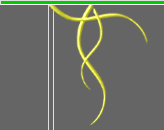| |
Violet (Viola odorata)

|
Violet (Viola odorata), a member of the Violaceae family, sometimes known as sweet violet, is a small tender perennial plant that only grows a few centimeters high. It is also known as Sweet Violet, English Violet, Common Violet, or Garden Violet.
It has dark green, heart-shaped leaves with downy undersides, fragrant violet-blue flowers, and an oblique underground rhizome. There are over 200 species in the Violaceae family, which are widely distributed over many temperate and tropical regions of the worlds. Grasse, in the South of France, has the largest production of Violets for the perfume trade, with smaller productions in Italy and China. The bulk of Violet Leaf absolute produced is used in high-class perfumes and occasionally in the flavoring of confectionery. Only a very small amount finds its way into the aromatherapy market.
It is interesting to note that while the plant produces flowers both in spring and fall these flowers are quite different. The flowers produced in the spring are fully formed and sweet scented, however they are generally barren and produce no seed. These flowers are also full of nectar but, because they bloom before bee season, they are not pollinated by bees. The flowers that bloom in the fall are very small and almost insignificant. They are quiet hidden among the leaves and have little or no aroma. They do however produce an abundance of seeds and these fertile flowers are self-fertilizing. The plant is also able to propagate itself in the summer by sending out runners to form new plants.
The sweet, unmistakable fragrance of Violet has been popular for centuries, particularly in the late Victorian period and it has long been used as an ingredient in many cosmetics and perfumes. Both the leaf and flowers also have a long tradition of use in herbal medicine.
The Ancient Greeks considered the Violet to be a symbol of fertility and love, so it was used in love potions. It is believed that violet flowers, when used in cosmetics, should be steeped in goats’ milk to increase female beauty.
Applying freshly crushed violet leaves to the skin has been found to be helpful in soothing itching and irritations. The freshly crushed flowers with their relaxing aroma could be added to the bath to sooth the skin.
Violet Leaf absolute has an earthy fragrance with a slightly floral overtone and it blends well with tuberose, champaca, clary sage, tarragon, cumin, basil and other florals.
Violet and its oils and extracts are generally considered to be non-toxic and a non-irritant with the possibility of sensitization in certain individuals.
Both the leaf and the flower have a long tradition of use in herbalism. Violet syrup and ointments were well known and widely used. Violet is listed in the British herbal pharmacopoeia.
Blends well with: Clary Sage, Lavender, Benzoin, Cumin, Basil, Helichrysum and Mimosa.
Disclaimer: The information presented herein is intended for educational purposes only. These statements have not been evaluated by the FDA and are not intended to diagnose, cure, treat or prevent disease. Individual results may vary, and before using any supplements, it is always advisable to consult with your own health care provider.
|
|


















